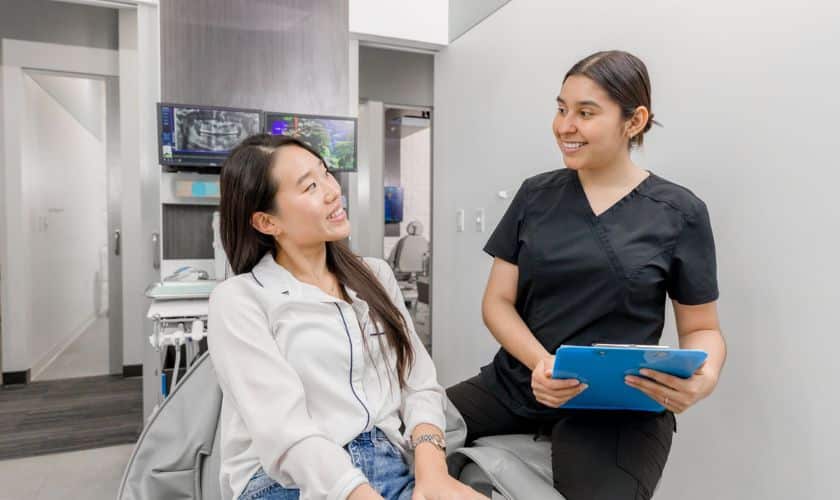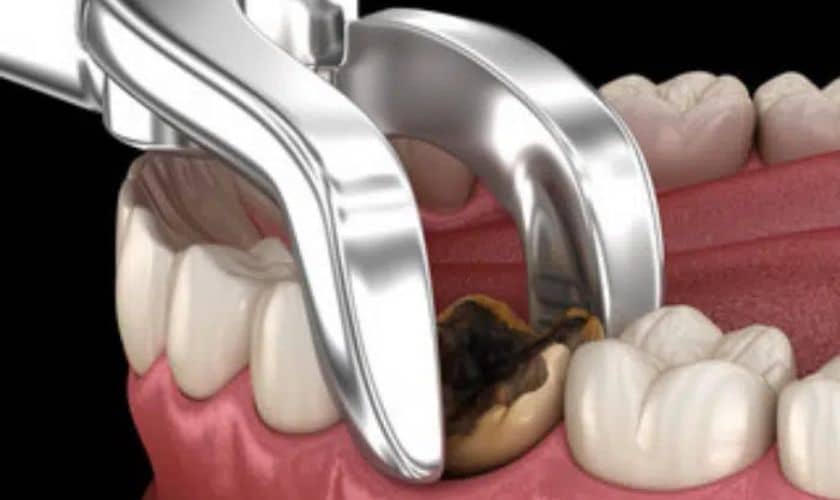Pearl Dental Blog

Healing Foods for a Speedy Tooth Extraction Recovery
Recovery after a tooth extraction can be uncomfortable, but the right choice of foods and beverages can make a significant difference. Whether it’s a wisdom tooth removal or any other extraction, a soft and nutritious diet can help ease discomfort and promote healing. In this guide, we’ll explore the importance of selecting the right foods and beverages during this recovery period.
From soothing soups to vitamin-rich smoothies, we’ll delve into the options that provide essential nutrients, minimize irritation, and support the healing process. After all, a speedy and comfortable recovery is the goal, and your dietary choices can play a pivotal role in achieving it.
Immediate Post-Extraction Diet
Following a tooth extraction, the immediate postoperative period is crucial for ensuring proper healing. During this time, it’s essential to adhere to specific dietary guidelines to prevent complications and discomfort. Here’s what you need to know:
A. Clarify the Restrictions Right After the Procedure:
In the first few hours after your tooth extraction, the surgical site is vulnerable. To facilitate healing and minimize the risk of complications, it’s essential to avoid certain foods and beverages:
– Hot Foods and Beverages: Hot foods and drinks can increase blood flow to the surgical area, potentially leading to increased bleeding and discomfort. It’s best to stick to cooler or room temperature options.
– Spicy Foods: Spices can irritate the surgical site, causing pain and inflammation. Opt for milder flavors during this period.
– Hard or Crunchy Foods: Chewing hard or crunchy foods can exert pressure on the surgical area, potentially dislodging the blood clot that forms in the socket. This can lead to a painful condition known as dry socket.
– Straws: Avoid using straws to consume liquids, as the sucking motion can disrupt the blood clot formation and increase the risk of complications.
B. Explain the Importance of Avoiding Certain Foods:
Understanding why these dietary restrictions are essential can help you stay on track with your post-extraction diet. Here’s why it’s crucial to avoid specific foods and practices:
– Protecting the Blood Clot: After extraction, a blood clot forms in the socket to aid in the healing process. Dislodging this clot can lead to dry socket, a painful condition that can significantly prolong your recovery.
– Minimizing Irritation: The surgical site is sensitive, and certain foods, particularly hot, spicy, or hard items, can cause irritation and discomfort.
– Promoting Healing: By following these restrictions, you’re creating an optimal environment for healing. Proper healing is not only more comfortable but also essential for the success of the extraction and any future dental work.
In the immediate aftermath of your tooth extraction, prioritizing your diet and adhering to these guidelines will contribute significantly to a smoother and more comfortable recovery.
Soft and Nutrient-Rich Options
After clarifying the restrictions for the immediate post-extraction period, the next crucial step in your recovery diet is selecting soft and nutrient-rich foods. These choices promote healing while minimizing irritation to the surgical site. Here’s what you need to know:
A. Discuss the Benefits of Soft Foods for Minimizing Irritation:
Soft foods are your allies during the initial days of recovery for several reasons:
– Gentle on the Surgical Site: Soft foods are easy to chew and swallow, minimizing the risk of accidentally irritating the surgical site with sharp or hard food particles.
– Less Chewing Required: Since soft foods require less chewing effort, they reduce the strain on your mouth, which can be beneficial during the initial healing phase.
– Nutrient-Packed: Soft foods can be packed with essential nutrients, ensuring that your body has the building blocks it needs for efficient tissue repair and healing.
B. Provide a List of Soft Foods:
To help you make the right choices, here’s a selection of soft and nutrient-rich foods that are not only easy on the surgical site but also contribute to your overall well-being:
– Yogurt: Opt for plain or flavored yogurt, which is not only soft but also contains probiotics that can promote oral health.
– Mashed Potatoes Creamy and comforting, mashed potatoes are a great choice for a soft side dish.
– Applesauce: This fruity option is gentle on the mouth and provides vitamins and fiber.
– Oatmeal: Soft, warm, and nutritious, oatmeal is an excellent breakfast choice.
– Pudding: Creamy and smooth, pudding can satisfy your sweet cravings while being easy to eat.
– Cottage Cheese: Soft and rich in protein, cottage cheese is a versatile option.
– Blended Soups: Pureed soups like tomato bisque or butternut squash soup are both soothing and nutritious.
These soft food options are not only gentle on your surgical site but also provide essential nutrients that support the healing process. Incorporating them into your diet during the initial post-extraction period can help ensure a smoother and faster recovery.
Foods to Avoid
In the early stages of your tooth extraction recovery, it’s essential to be aware of the foods and beverages that can potentially hinder the healing process or cause discomfort. Here’s a list of foods and practices to avoid:
A. List Foods That Can Irritate the Surgical Site:
Certain foods and drinks have the potential to irritate the surgical site and lead to discomfort or complications. It’s crucial to steer clear of these items:
– Spicy Foods: Spices can cause irritation and inflammation in the mouth, which can be particularly uncomfortable while you’re healing.
– Hot Foods and Beverages: Hot temperatures can increase blood flow to the surgical area, potentially leading to bleeding and discomfort. Stick to cooler or room temperature options.
– Hard or Crunchy Foods: Chewing hard or crunchy foods can exert pressure on the surgical site, increasing the risk of dislodging the blood clot that forms in the socket. This can result in dry socket, a painful condition.
– Alcoholic Beverages: Alcohol can interfere with the healing process and increase the risk of bleeding and other complications. It’s best to abstain from alcohol during your recovery.
– Tobacco Products: Smoking or using tobacco products can impede healing and increase the likelihood of infection. It’s essential to refrain from tobacco during your recovery, ideally quitting for the long term to promote overall oral health.
B. Explain Why Avoiding Alcohol and Tobacco Is Crucial:
Understanding the reasons behind avoiding alcohol and tobacco during your recovery can help you appreciate the importance of these restrictions:
– Alcohol’s Impact: Alcohol can increase the risk of bleeding and interact negatively with any medications prescribed for pain or infection prevention.
– Tobacco’s Effect: Tobacco products, including smoking and chewing tobacco, can delay healing, suppress the immune system, and increase the risk of infection.
By adhering to these dietary restrictions and avoiding the listed foods and practices, you’re creating a more favorable environment for healing, reducing discomfort, and lowering the risk of complications during your tooth extraction recovery.
In conclusion, your post-tooth extraction diet plays a crucial role in your recovery. Adhering to the immediate post-extraction restrictions, choosing soft and nutrient-rich foods, and avoiding irritants like spicy and crunchy items are essential steps. By prioritizing your diet, you can promote healing, minimize discomfort, and pave the way for a smoother recovery process.





